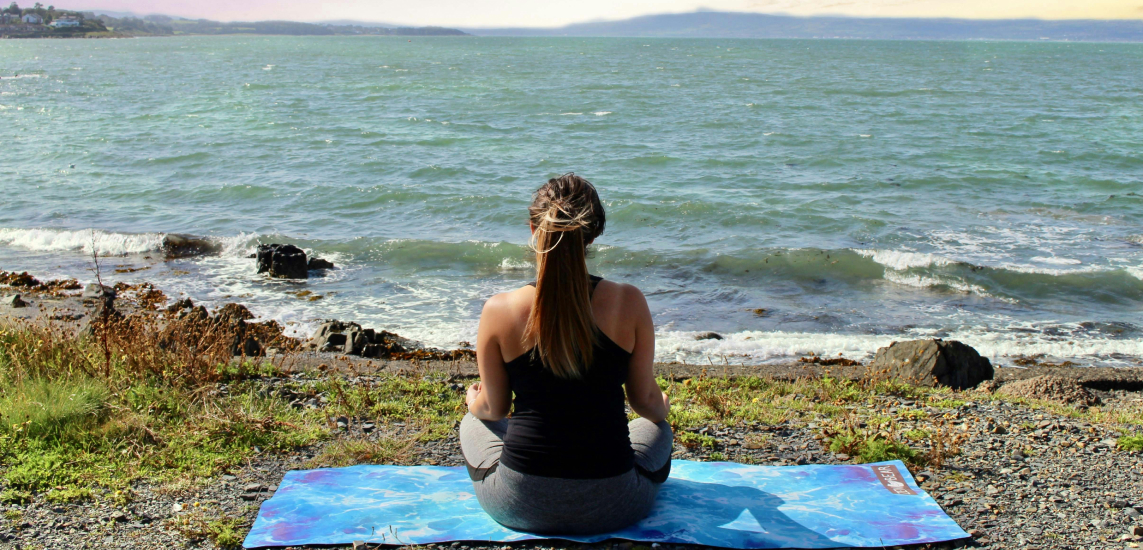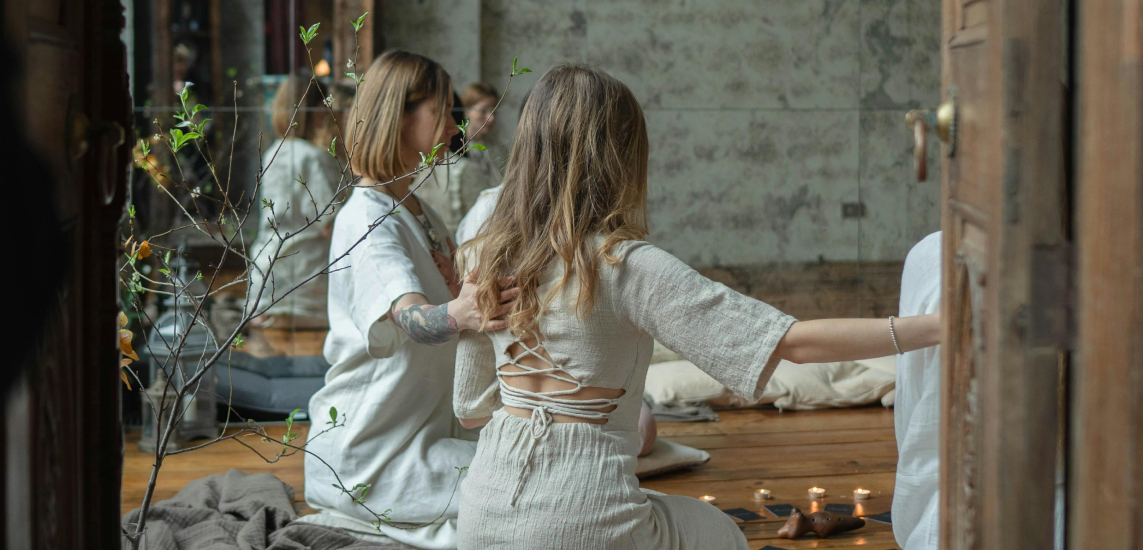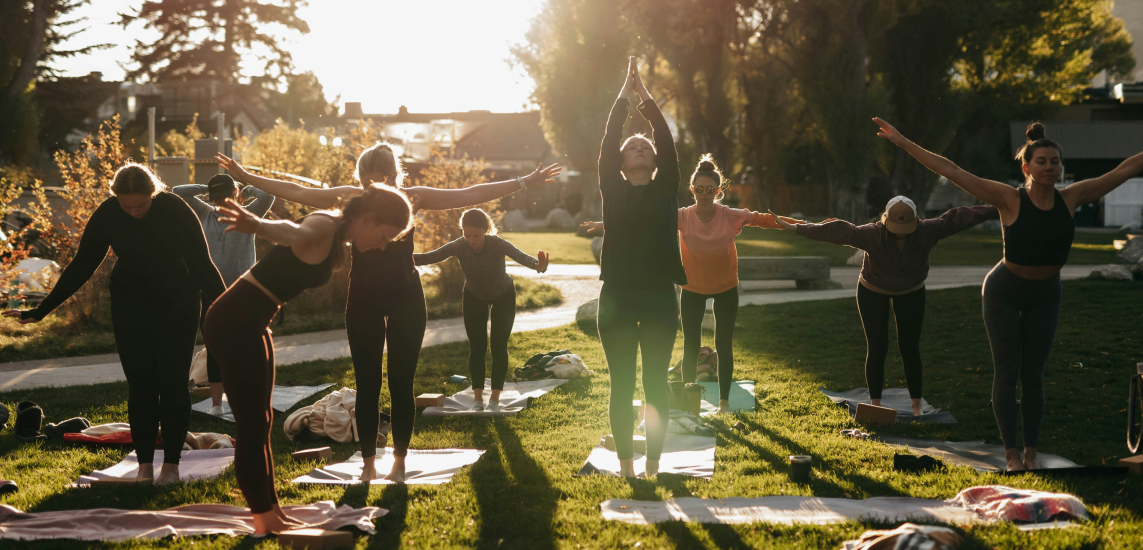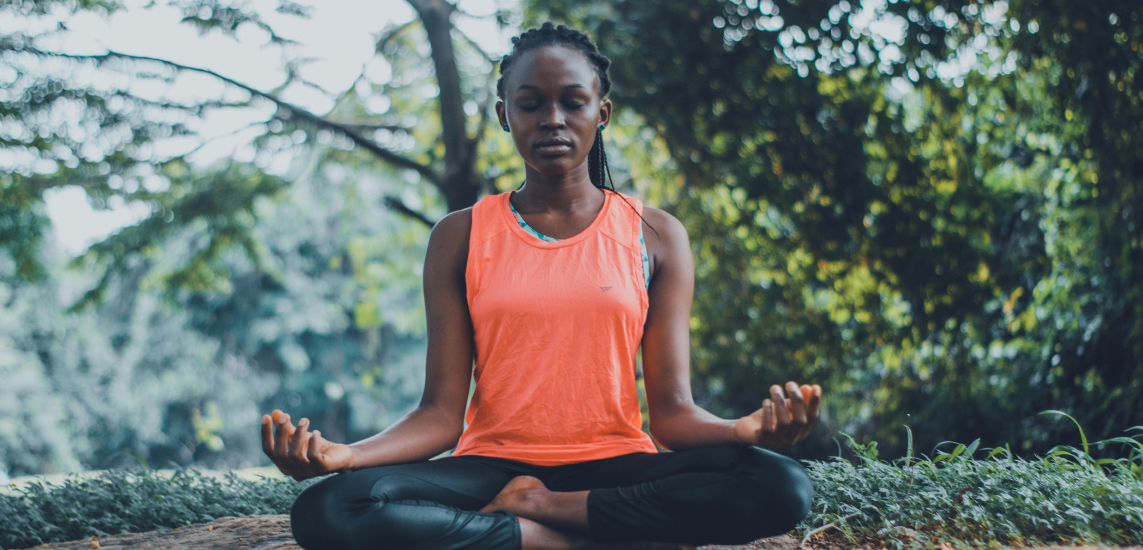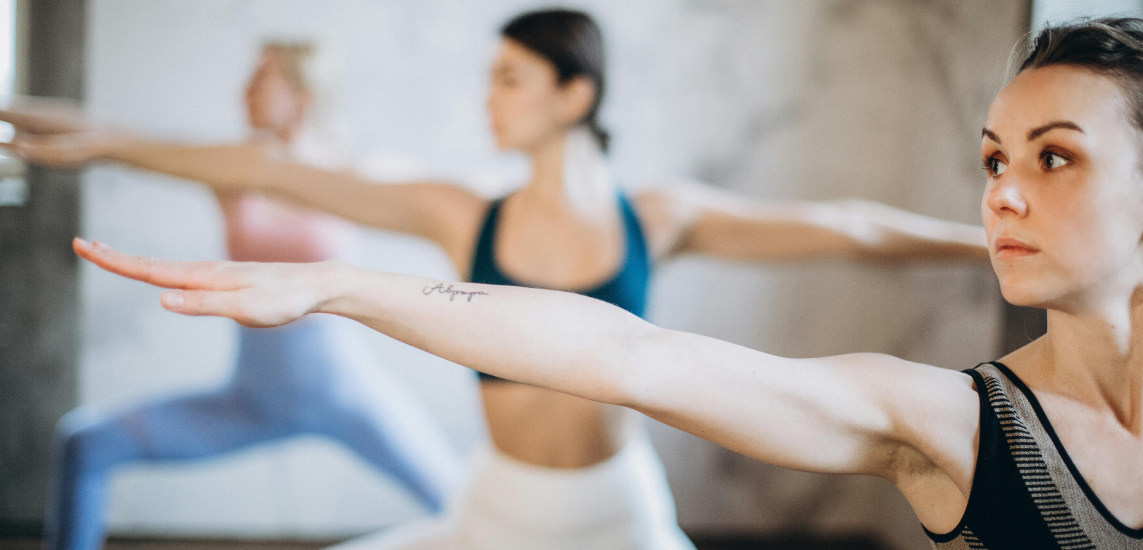This article was created using insights from Insight Timer’s meditation experts.
Have you ever felt the need to press pause on the noise of everyday life and reconnect with your inner self? A silent meditation retreat might be the perfect place to do just that. These retreats offer a unique opportunity to step away from distractions, embrace complete silence, and dive deep into your meditation practice. Whether you’re seeking mental clarity, emotional healing, or a stronger spiritual connection, a silent retreat can be a transformative experience.
In this article, we’ll guide you through everything you need to know about silent retreats—from the benefits to what to expect and how to prepare, helping you make the most of your journey. If you’re new to meditation or unsure about spending several days in silence, don’t worry. This guide is designed to reassure and inspire you to take the first step toward a more mindful and peaceful life.
Key takeaways
- Silent meditation retreats offer a unique opportunity to step away from the noise of everyday life and reconnect with your inner self, fostering mental clarity, emotional healing, and spiritual growth.
- Preparation is key: Pack thoughtfully, set intentions, and practice meditation beforehand to make the most of your retreat experience.
- Common challenges like restlessness, discomfort, or emotional overwhelm are natural—embrace them as part of the journey toward deeper self-awareness and resilience.
- Whether you’re a beginner or an experienced meditator, a silent retreat can be a transformative experience, helping you cultivate inner peace and a stronger connection to the present moment.
What is a silent meditation retreat?
A silent meditation retreat is a dedicated period of time, often ranging from a weekend to 10 days or more, where participants commit to noble silence. This means no talking, no eye contact, and no technology—just you, your breath, and your thoughts. The purpose of this silence is to create a space for deep self-reflection, mindfulness, and inner calm.
During the retreat, attendees typically engage in various practices like:
- meditation sessions
- walking meditation
- gentle yoga
These activities are designed to help you stay present and cultivate awareness of your body, mind, and surroundings.
Silent retreats have roots in ancient spiritual traditions, particularly Buddhism, where practices like vipassana meditation were developed to help individuals gain insight into the nature of reality.
As Clare Walters, an Insight Timer retreat host, explains:
“Silent retreats are unique because everyone is in it together and understands that you are not going to engage with them in the normal way. This makes it a safe space without the distractions of your normal social interactions, allowing you to become more aware of your habitual responses.”
Ready to welcome the New Year in silence? Join the New Year’s 4-Day Silent Meditation Retreat in Washington from December 29, 2025, to January 1, 2026. Guided by Hridaya teachings, this retreat offers meditation, self-inquiry, and sacred silence to quiet the mind, open the heart, and reconnect with your truest self.
Silent meditation vs. vipassana meditation
While both silent meditation and vipassana meditation involve periods of silence, they differ in focus and practice. Here’s a quick comparison of the two:
- Silent meditation:
- Focus: General mindfulness and self-awareness
- Practices: Can include a variety of techniques like guided meditation, mindful walking, or loving-kindness meditation
- Intention: To create a peaceful space for reflection and relaxation
- Vipassana meditation:
- Focus: Insight into the true nature of reality
- Practices: Involves observing bodily sensations and mental phenomena without attachment
- Intention: To cultivate wisdom and liberation from suffering
Both practices offer profound benefits, but vipassana retreats are often more structured and intensive, while silent retreats can be more flexible and accessible for beginners.
Benefits of attending a silent meditation retreat
Attending a silent meditation retreat can be a life-changing experience. Here are some of the key benefits you might discover:
- Reduced stress and anxiety: Silence helps lower stress hormones and promotes relaxation.
- Improved focus and clarity: Stepping away from distractions allows you to tune into the present moment and gain mental clarity.
- Emotional healing: Silence creates space to process emotions and break free from habitual patterns.
- Deeper self-awareness: By turning inward, you can uncover insights about your inner self and life goals.
- Spiritual growth: Many participants report feeling a stronger sense of spiritual connection and purpose.
Amy Johnson, Ph.D., an Insight Timer retreat host, shares:
“Prolonged silence is a rare opportunity to not chase experience. It’s a chance to simply be as you are, recognizing yourself as what is always here but typically overlooked.”
Scientific studies support the benefits of silence and mindfulness, showing improvements in mental health, emotional regulation, and even attention.
Ready to experience a transformative retreat in North Carolina? Join Powersoul Retreat in Boone from November 19–23, 2025. This 5-day immersion in the Blue Ridge Mountains combines contemplative psychotherapy, meditation, and cognitive neuroplasticity to help you heal and reconnect with your authentic self.
What to expect during a silent meditation retreat
A typical day at a silent retreat follows a structured schedule designed to support your practice. Here’s what you might experience:
- Morning meditation: Start your day with a guided meditation or silent sitting.
- Mindful meals: Enjoy vegetarian meals in silence, focusing on the sensory experience of eating.
- Walking meditation: Practice mindful walking to connect with nature and your body.
- Free time: Use this time to rest, journal, or explore the retreat center’s surroundings.
- Evening reflection: End the day with a meditation session or singing bowls to promote relaxation.
The rules of silence are usually enforced strictly, creating an environment free from distractions. Most silent retreats are held in serene locations, surrounded by nature, to enhance the sense of peace and simplicity.
Hannah De Maagt, an Insight Timer retreat host, describes her retreat schedule:
“We start with gentle morning yoga and meditation, followed by inspiring lectures and group meditations. After lunch, there’s time to rest and reflect, and we end the day with practices like yoga nidra or sound journeys.”
How to prepare for a silent meditation retreat
Preparing for a silent meditation retreat is about more than just packing your bags—it involves mental and emotional preparation as well. Whether you’re a seasoned meditator or a beginner, taking the time to prepare mentally, emotionally, and practically can help you make the most of your time in silence.
While a silent retreat may feel daunting for some, it can be an incredibly rewarding experience. Here’s how you can prepare to ensure you can fully embrace the retreat’s gifts of inner calm, clarity, and spiritual growth:
- Pack wisely: Bring comfortable clothing, any medications or vitamins, and essentials you’ll need throughout your stay.
- Set intentions: Reflect on why you’re attending the retreat and what you hope to gain.
- Practice silent meditation: If you’re new to meditation, start with short sessions to build familiarity.
- Disconnect from technology: Try to limit your use of technology leading up to the retreat, making it easier to fully disconnect.
- Manage expectations: Be open to whatever arises during the retreat, whether it’s discomfort or profound insights.
What to bring to a silent meditation retreat
Unlike a typical vacation, where you might pack for entertainment or convenience, a silent retreat requires simplicity and intentionality. The goal is to minimize distractions and ensure you have everything you need to feel comfortable, grounded, and present.
At a silent retreat, you’ll spend hours in meditation sessions, mindful walking, and periods of rest. The right items can make a big difference in your physical comfort and mental focus. For example, a cozy sweater or shawl can keep you warm during early morning meditations, while a journal can help you process the thoughts and emotions that arise during your time in silence.
As Clare suggests:
“Bring comfortable clothes and plenty of layers. It’s important to feel cozy. Also, bring a journal and pen—it can be helpful to write about your inner journey and release any issues you uncover.”
Here’s a quick checklist of essential and optional items to bring:
- Essentials:
- Comfortable clothing
- Meditation cushion or bench
- Water bottle
- Warm layers (retreat centers can get chilly!)
- Optional items:
- Yoga mat
- Earplugs
- Books (if allowed)
- Journal and pen
Common silent meditation challenges and how to overcome them
Spending several days in silence, away from the distractions and comforts of everyday life, can bring up feelings of restlessness, discomfort, or even emotional overwhelm. These challenges are a natural part of the process and, in many ways, are where the real growth happens.
When you remove the noise and busyness of daily life, you create space for your mental chatter, unresolved emotions, and habitual patterns to surface. This can feel uncomfortable at first, but it’s an opportunity to observe these patterns with curiosity and compassion.
As Amy explains:
“The beauty of prolonged silence is that we get to see that all experience comes and goes. While these feelings can feel challenging at times, they reveal our incredible resilience.”
Here are some common challenges you might face during a silent retreat and practical ways to navigate them:
- Boredom: Use this as an opportunity to observe your mental chatter without judgment.
- Physical discomfort: Practice mindful movement or adjust your posture during meditation.
- Emotional overwhelm: Focus on your breath and remind yourself that emotions are temporary.
- Restlessness: Embrace the discomfort and trust the process.
Challenges are part of the journey, and overcoming them can lead to profound growth.
Tips for making the most of your silent retreat experience
One of the keys to a successful retreat is staying open to whatever arises—whether it’s discomfort, unexpected emotions, or profound insights. As Hannah advises:
“Surrender, let yourself be guided, and join with an open heart and mind. A silent retreat is a perfect moment to get to know yourself and learn how to love yourself.”
Here are some practical tips to help you navigate your retreat with grace and intention:
- Embrace discomfort: Remain open to whatever comes up, whether it’s physical discomfort or emotional challenges.
- Journal your insights: Use a notebook to process your thoughts and emotions as they come up.
- Balance activity and rest: Participate in structured activities like meditation sessions and mindful walking, but also allow time for rest and reflection.
- Be patient with yourself: Show yourself grace and compassion and remember that the retreat is a journey, not a destination.
Discover top meditation retreats with Insight Timer
Ready to take the next step on your mindfulness journey? Insight Timer offers a variety of silent meditation retreats, from beginner-friendly options to advanced programs. Whether you’re looking for a weekend escape or a longer vipassana course, you’ll find the perfect experience to suit your needs and schedule. Explore our curated list of silent retreats and start your journey toward deeper peace and clarity today.
Looking for more retreat options? Insight Timer has a wide range of global retreats, from meditation to yoga and wellness, led by celebrated teachers around the world.
Frequently asked questions about silent meditation retreats
How much does a silent retreat cost?
The cost of a silent meditation retreat can vary widely depending on factors like location, duration, and amenities. Budget-friendly retreats may cost as little as several hundred dollars, while luxury retreats typically run upwards of $1,000. Some retreat centers offer sliding-scale pricing or scholarships to make the experience accessible—be sure to inquire about this when booking a retreat.
What are the rules of a silent retreat?
The primary rule of a silent retreat is noble silence, which means no talking, no eye contact, and no technology. This creates a distraction-free environment for deep introspection. Other common rules include refraining from reading, writing, or engaging in activities that pull you out of the present moment. Not all silent retreats are the same when it comes to rules, so it’s important to clarify when completing your booking.
What to do during silent meditation?
During silent meditation, you can focus on techniques like breath awareness, body scans, or loving-kindness meditation. These practices help you stay present and cultivate mindfulness. If your mind wanders, gently bring your attention back to your chosen focus without judgment.
What are the 5 rules of vipassana meditation?
The five ethical guidelines of vipassana meditation are no killing, no stealing, no lying, no sexual misconduct, and no intoxicants. These rules, known as the Five Precepts, are designed to create a foundation of moral conduct that supports meditation practice. These rules are typically observed during vipassana retreats and are considered integral to the practice.
Can beginners attend a silent retreat?
Absolutely! Many silent meditation retreats are beginner-friendly and welcome participants of all experience levels. If you’re new to meditation, consider starting with a shorter retreat, such as a weekend program, to ease into the experience. Retreat hosts and teachers are usually available to provide guidance and support throughout the process. As Hannah notes, “Most silent retreats are accessible for all levels, and no experience is needed.”
References
Menezes, C. B., Pereira, M. G., & Bizarro, L. (2012). Sitting and silent meditation as a strategy to study emotion regulation. Sci Elo Brazil, 5(1). https://doi.org/10.3922/j.psns.2012.1.05

